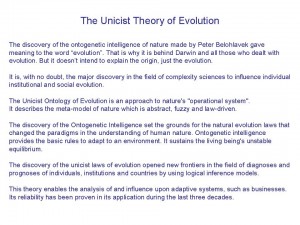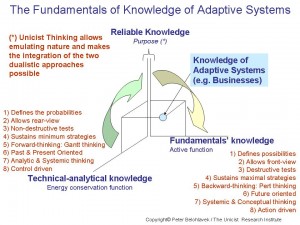Change Management Using Intelligent Apps
The possibilities that have been opened by the technologies of the 4th industrial revolution introduced two new situations that fostered adaptability within organizations:
- On the one hand, the adaptive automation processes simplified the approach to the changes introduced by the markets.
- On the other hand, it changed the role of the “change agent” that moved from people to intelligent applications. Now organization do not need “heroes” to work as change agents. They just need to have an adaptive approach sustained by intelligent systems and apps.
The synthesis on change management that is published below exposes the functionalist approach to changes that has been developed at The Unicist Research Institute.
Characteristics of small, big and medium changes:
1) Small Changes
Small changes are those where there is no structural change involved. The change of management is, in itself, a small change. The change of management becomes a medium or big change if managers are changed to introduce a new structure.
2) Big Changes
Big changes necessarily produce conflicts in an organization. Big changes require all the energy of an organization to be implemented. When big changes are necessary it is because there has been a structural change of the environment that made an organization dysfunctional. But big changes can be divided into medium changes that can now be managed by intelligent applications designed by the people involved.
Big Change Implementation:
- Define the nature of the future situation
- Define the nature of the present situation
- Understand the real need
- Design driving objects
- Design catalysts to accelerate processes
- Define the implementation taxonomy
- Implement change
3) Medium Changes are now Intelligent Apps Driven
Medium changes might be autonomous changes or be part of a big change. Medium changes require the participation of the individuals that are committed with the process that is being changed.
The participation is now driven by intelligent applications that allow introducing stages of big changes without generating resistance.
To introduce medium changes it is necessary to deal with a “participation model” that allows people to participate in the change of their activities, which implies participating in the design of the intelligent applications.
Medium changes are based on “Avant Garde Groups” that introduce the changes in the organization based on a part-time activity within their work environment.
Confirmation of how Apps work as Change Agents
We invite you to confirm this approach by taking a deeper look at the apps of your smartphone where you will see which of the applications introduced a change in your habits and which are being ignored for being unnecessary. Anyhow, there are extreme situations where change agents are needed, but it must be considered that most of the “heroes” die young.
Unicist Press Committee
The Unicist Research Institute







 Leadership is based on the need to sustain one’s authority. The participation of others is a condition of leadership. A leader is such because s/he is followed.
Leadership is based on the need to sustain one’s authority. The participation of others is a condition of leadership. A leader is such because s/he is followed.

















